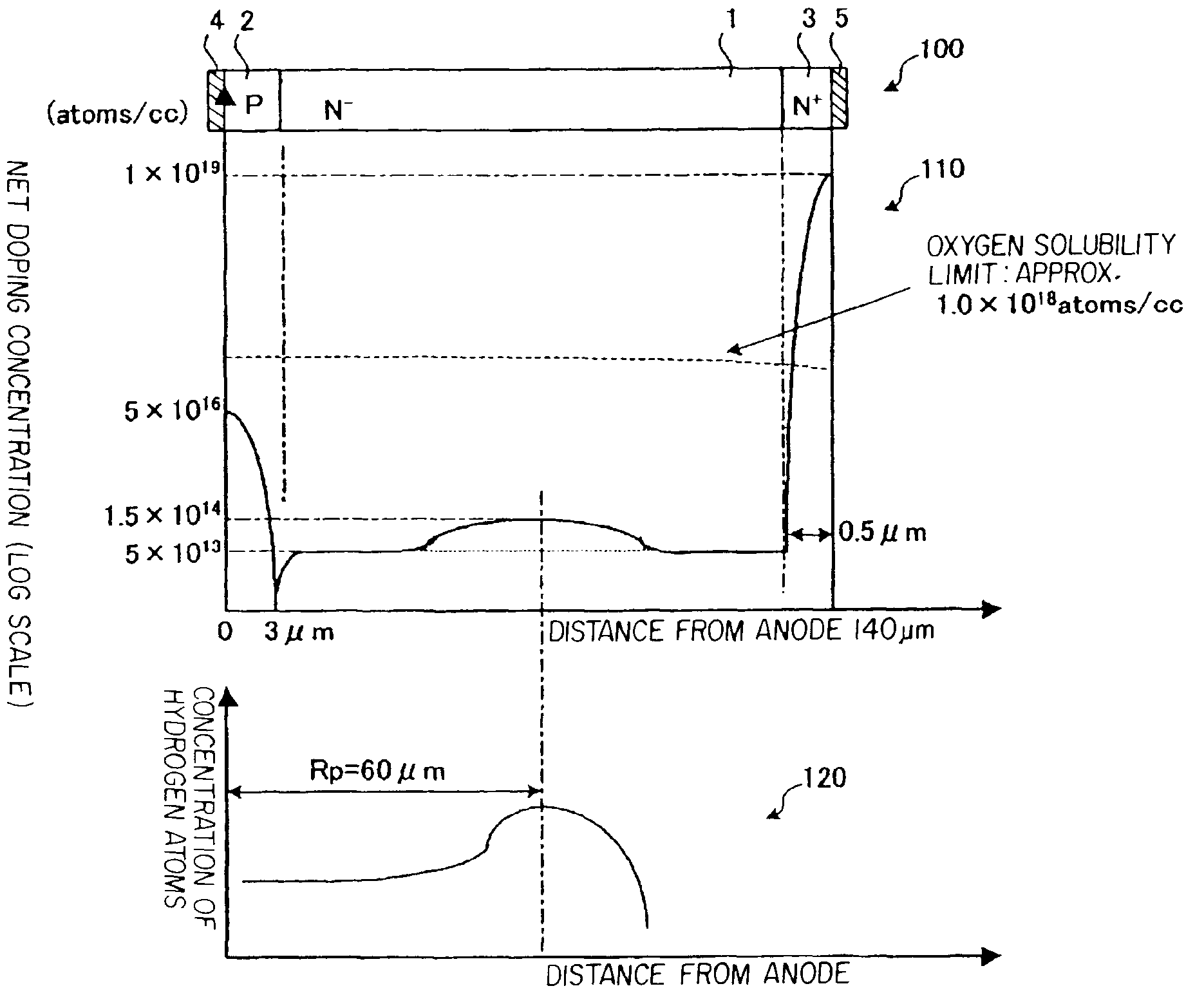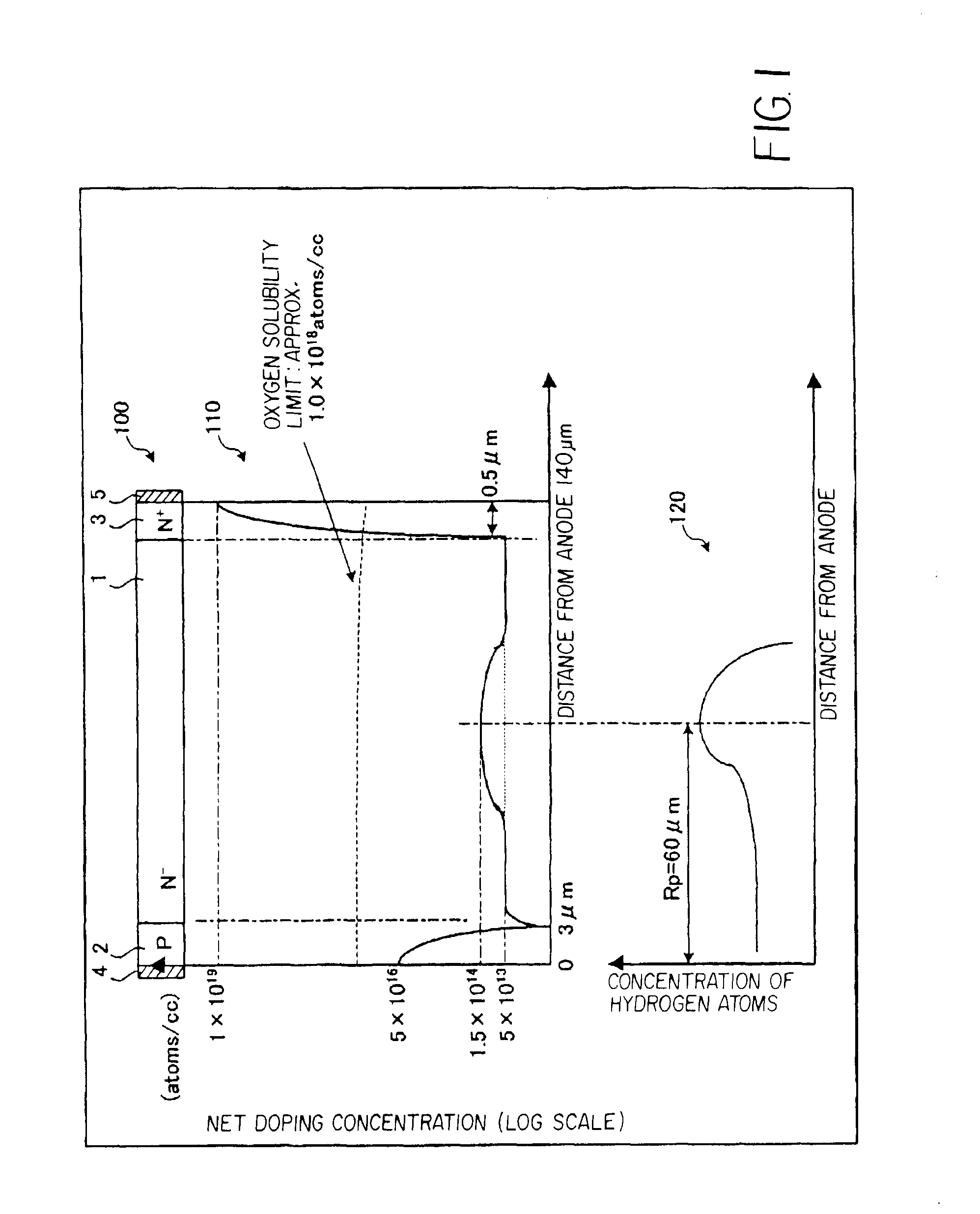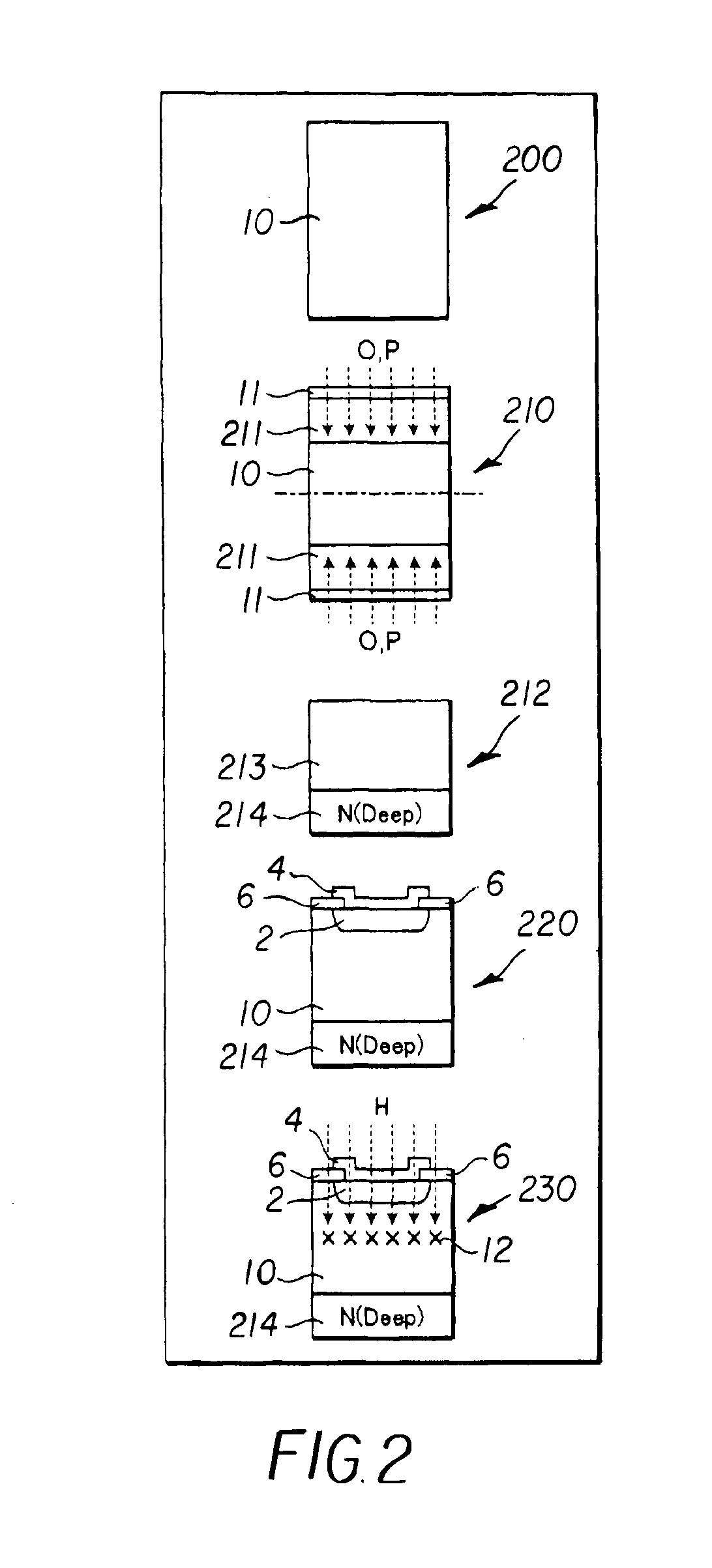Semiconductor device and manufacturing method for same
a technology of semiconductors and manufacturing methods, applied in semiconductor devices, basic electric elements, electrical equipment, etc., can solve the problems of difficult formation of a region, scratching of implanted faces, thin wafer breakage, etc., and achieves a wide buffer structure, low loss, and fast operation
- Summary
- Abstract
- Description
- Claims
- Application Information
AI Technical Summary
Benefits of technology
Problems solved by technology
Method used
Image
Examples
embodiment 1
[0087]FIG. 1 shows the configuration of the semiconductor device of Embodiment 1 of the invention, the net doping concentration, and the distribution of hydrogen atoms. In FIG. 1, a P-type second semiconductor layer 2, serving as a P anode layer, is formed on one main face of an N-type first semiconductor layer 1, serving as an N− drift layer, as shown in cross-sectional view 100 of the semiconductor device. Further, an N-type third semiconductor layer 3, serving as an N+ cathode layer, is formed on the other main face of the first semiconductor layer 1. And, on the surface of the second semiconductor layer 2, an anode 4 is formed. And on the surface of the third semiconductor layer 3, a cathode 5 is formed.
[0088]As shown in the characteristic diagram 110 for the distance from the anode and the net doping concentration (log scale) in FIG. 1, the net doping concentration in the first semiconductor layer 1 has a peak substantially in the center of the first semiconductor layer 1, and ...
embodiment 2
[0122]FIG. 12 shows the configuration of the semiconductor device of Embodiment 2 of the invention, the net doping concentration, and the proton distribution. As shown in cross-sectional view 1200 of the semiconductor device in FIG. 12, the semiconductor device of Embodiment 2 is the semiconductor device of Embodiment 1 shown in FIG. 1, with a fourth semiconductor layer 7, serving as an N cathode buffer layer, with higher concentration than the first semiconductor layer 1 and lower concentration than the third semiconductor layer 3, provided between the first semiconductor layer 1 and the third semiconductor layer 3. Otherwise the configuration is the same as in Embodiment 1, and so the same symbols are assigned, and explanations are omitted.
[0123]As an example, the net doping concentrations and dimensions of various portions of a semiconductor device of Embodiment 2 are described. However, only values different from those of the example of Embodiment 1 are explained. As shown in th...
embodiment 3
[0134]FIG. 15 shows the configuration of the semiconductor device of Embodiment 3 of the invention, the net doping concentration, and the distribution of hydrogen concentration. As shown in cross-sectional view 1500 of the semiconductor device in FIG. 15, the semiconductor device of Embodiment 3 is the semiconductor device of Embodiment 1 shown in FIG. 1, in which the third semiconductor layer 3 is made thick. Otherwise the configuration is similar to that of Embodiment 1, and so the same symbols are assigned and explanations are omitted.
[0135]As an example, the net doping concentrations and dimensions of each of the portions of the semiconductor device of Embodiment 3 are described. However, only values different from those of the example of Embodiment 1 are explained. As indicated in the characteristic diagram 1510 for the distance from the anode and the net doping concentration (log scale) in FIG. 15, the distance to the interface between the first semiconductor layer 1 and the t...
PUM
 Login to View More
Login to View More Abstract
Description
Claims
Application Information
 Login to View More
Login to View More - R&D
- Intellectual Property
- Life Sciences
- Materials
- Tech Scout
- Unparalleled Data Quality
- Higher Quality Content
- 60% Fewer Hallucinations
Browse by: Latest US Patents, China's latest patents, Technical Efficacy Thesaurus, Application Domain, Technology Topic, Popular Technical Reports.
© 2025 PatSnap. All rights reserved.Legal|Privacy policy|Modern Slavery Act Transparency Statement|Sitemap|About US| Contact US: help@patsnap.com



